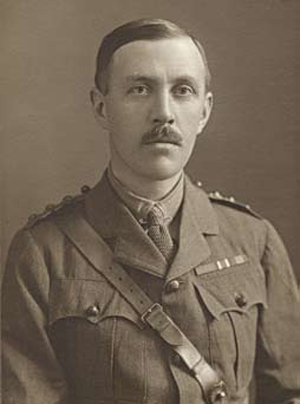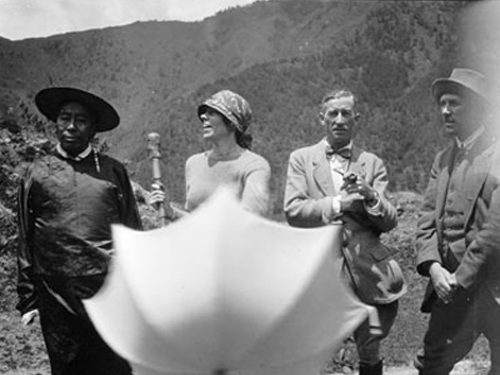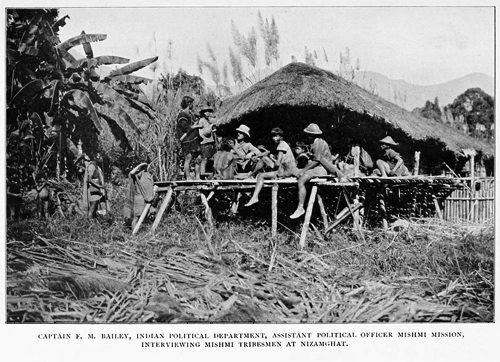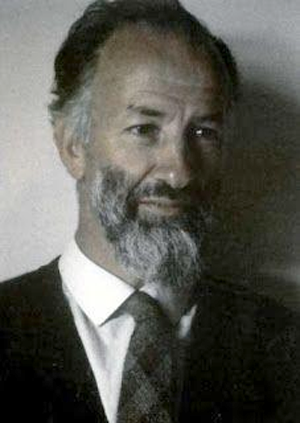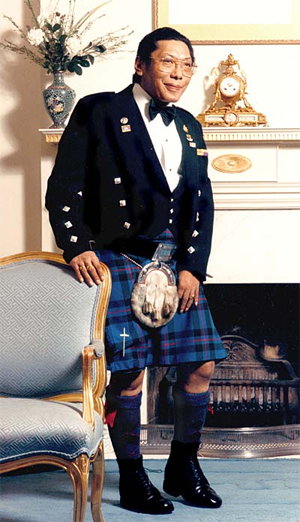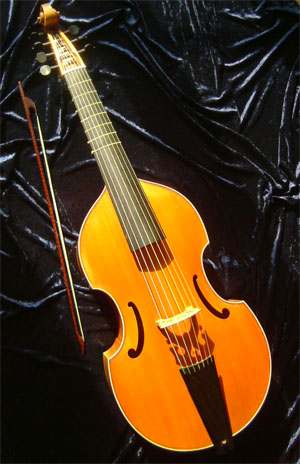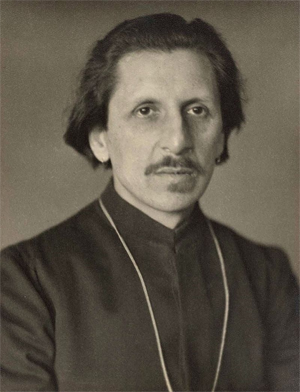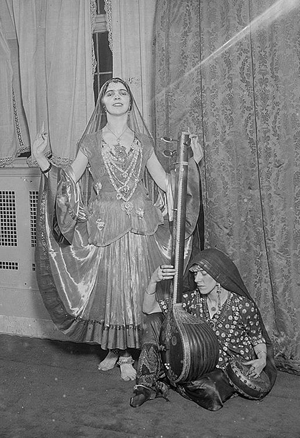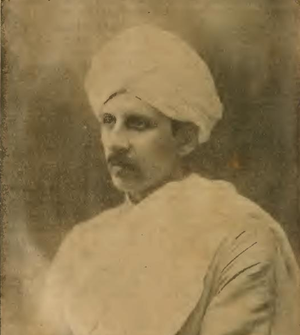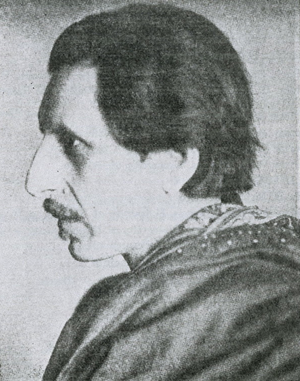Part 2 of 3
Rigdzin Dorje Rinpoche[x]
Mikel Dunham[x]
MIKEL DUNHAMMikel Dunham is an author, artist and photographer. In the late 1980s Dunham became the last student of the late thangka master, Pema Wangyal of Dolpo. He spent the next four years learning how to mix mineral pigments, line-brush in 22-carat gold and paint Tibetan iconography. This led to Dunham’s commission to paint the murals for a Tibetan monastery in Sarnath, India—one of eight major pilgrimage sites for Buddhists. Dunham then became artistic director for a much larger Tibetan mural project—a three-year commitment—in upstate New York at Pema Samye Ling Monastery.
In 2005, Dunham published Buddha’s Warriors: The Story of the CIA-Backed Tibetan Freedom Fighters, the Chinese Invasion, and the Ultimate Fall of Tibet. Buddha’s Warriors is a political Tibetan history based on seven years of interviews with and the CIA Task Team who secretly trained the growing Tibetan resistance movement in the late 1950s and early 60s. In the last year he has written articles for Harvard South Asian Journal, Tricycle Magazine, and a four-part report on child prostitute trafficking in Asia for Tehelka.
Dunham currently spends much of his time in Nepal researching his next political history while also playing an active role in human rights issues. He was selected as an international observer during the 2008 April elections in Nepal. Continual updates of the political situation in Nepal and Tibet are posted on his website
Personal Website:
Mikel Dunham Blog
Publications:
Samye: A Pilgrimage to the Birthplace of Tibetan Buddhism
Stilled Life
Casting for Murder
Buddha’s Warriors: The Story of the CIA-Backed Tibetan Freedom Fighters, the Chinese Invasion, and the Ultimate Fall of Tibet
Le Gout du Tibet
Polly Young-Eisendrath, Ph.D.[x]
POLLY YOUNG-EISENDRATH, PH.D.Polly Young-Eisendrath, Ph.D., is an engaging and imaginative speaker, a Jungian analyst, a psychologist and an author. An experienced clinician and teacher, she is Clinical Associate Professor of Psychiatry and Psychology at the University of Vermont and Consultant in Leadership Development at Norwich University.
Personal Website: Polly Young-Eisendrath
Publications:
The Self-Esteem Trap: Raising Confident and Compassionate Kids in an Age of Self-Importance
Women and Desire: Beyond Wanting to Be Wanted
The Resilient Spirit: Transforming Suffering into Insight and Renewal
You’re Not What I Expected: Love After the Romance Has Ended
Hags and Heroes: A Feminist Approach to Jungian Psychotherapy With Couples
Susan M. Evans, PhD[x]
SUSAN M. EVANS, PHDSusan Evans PhD is Professor of Psychology in Clinical Psychiatry in the Department of Psychiatry at Weill Cornell Medical Center. Dr. Evans received her Ph.D. in clinical psychology from the New School for Social Research in New York City. She is Interim Vice Chair and Director of Psychology in Psychiatry, Director of the Psychology Internship Program and past President of the Payne Whitney Faculty Council.
Dr. Evans is also an expert in the area of stress management, specifically Mindfulness Based Stress Reduction (MBSR). MBSR involves training in mindfulness meditation and aims to promote mind-body health and well-being. In recognition of her expertise and contributions, Dr. Evans was appointed as a founding fellow of the Academy of Cognitive Therapy. She has authored numerous articles and chapters on cognitive behavioral therapy, and studies in the areas of posttraumatic stress disorder, generalized anxiety disorder, depression, HIV/AIDS, and mindfulness based cognitive therapy. Dr. Evans presents her research worldwide and is regularly invited to conduct lectures, seminars and workshops in the US and abroad to professionals.
Arun Ghandi[x]
ARUN GHANDIActivist and diversity speaker Arun Gandhi is the founder of the M.K. Gandhi Institute for Nonviolence and the grandson of the legendary peace fighter and spiritual leader, Mohandas Gandhi. Born and raised in apartheid-era South Africa, Gandhi was sent to India when he was 12 to live with his grandfather, where he observed firsthand the profound national campaign for liberation through nonviolent means.
Following his visit to India, Arun Gandhi went on to lead successful economic and social reforms in India. He then came to the United States, where he and his late wife Sunanda founded the M.K. Gandhi Institute for Nonviolence. The Institute’s goals are to further the study and practice of nonviolence while also providing a unique source of information about Mohandas Gandhi and his work. By continuing his grandfather’s legacy, Arun Gandhi has been able to provide insight into one of history’s most influential leaders and has continued to stress the importance of nonviolence across the globe.
In January, 2008 Arun Gandhi was forced to resign from the M.K. Gandhi Institute for Nonviolence due to his written criticism of the ongoing Israeli inclination towards violence on Palestinian lands. He later provided a written apology for his statement.
Aura Glaser[x]
AURA GLASERAura Glaser is one of the foremost students of Gehlek Rimpoche. In the late 1970s, she traveled to India where she began to study and practice Tibetan Buddhism. Aura is a Dharma teacher and a co-founder of Jewel Heart. She holds a Ph.D. in Clinical Psychology from Pacifica Graduate Institute, a M.A. in Clinical Psychology from the Center for Humanistic Studies, and a B.A. in Women’s Studies from the University of Michigan. She is also the creator and former owner of Crazy Wisdom Bookstore. Aura maintains a private psychotherapy practice, and lives in Ann Arbor, Michigan.
Publications:
A call to compassion
Amy Goodman[x]
AMY GOODMANAmy Goodman (born April 13, 1957) is an American broadcast journalist, syndicated columnist and author.
A 1984 graduate of Harvard University, Goodman is best known as the principal host of Pacifica Radio’s Democracy Now! program for over a decade, covering labor, peace and human rights movements as well as championing independent media. As an investigative journalist, she has received acclaim for exposés of human rights violations in East Timor and Nigeria. Goodman is the first journalist to receive the Right Livelihood Award.
Democracy Now! has been called “probably the most significant progressive news institution that has come around in some time” by professor and media critic Robert McChesney. In 2001, the show was temporarily pulled off the air, as a result of a conflict with a group of Pacifica Radio board members and Pacifica staff members and listeners. During that time, it moved to a converted firehouse where it continues to broadcast today.
“It’s just the basic tenets of good journalism that instead of this small circle of pundits, you talk to people who live at the target end of the policy,” she said. When the Bush Administration didn’t find weapons of mass destruction, it “laid bare more than the Bush Administration, it laid bare media that act as a conveyor belt for the lies of the Administration. You know governments are going to lie, but not the media. So I think people started to seek out other forms of information.”
When President Bill Clinton called WBAI on Election Day, 2000, for a quick get-out-the-vote message, Goodman and Gonzalo Aburto challenged him for 28 minutes with questions about Leonard Peltier, racial profiling, the Iraq sanctions, Ralph Nader, the death penalty, the North American Free Trade Agreement (NAFTA), and the Israeli-Palestinian conflict. Clinton defended Democratic policies against criticism, but charged Goodman with being “hostile, combative, and even disrespectful”.
In 1991, covering the independence movement in East Timor, Goodman and fellow journalist Allan Nairn were badly beaten by Indonesian soldiers after they witnessed a mass killing of Timorese demonstrators in what became known as the Dili Massacre. In 1998, Goodman and journalist Jeremy Scahill documented Chevron Corporation’s role in a confrontation between the Nigerian Army and villagers who had seized oil rigs and other equipment belonging to oil corporations. Two villagers were shot and killed during the standoff. During the 2008 Republican National Convention, several of Goodman’s colleagues from Democracy Now! were arrested and detained by police while reporting on an anti-war protest outside the RNC.
Goodman has received dozens of awards for her work, including the Robert F. Kennedy Journalism Award and the George Polk Award. In 2001, she declined to accept the Overseas Press Club Award, in protest of the group’s pledge not to ask questions of keynote speaker Ambassador Richard Holbrooke and because the OPC was honouring Indonesia for their improved treatment of journalists despite the fact that they had recently beaten and killed reporters in occupied East Timor. On October 1, 2008, Goodman was named as a recipient of the 2008 Right Livelihood Award, often referred to as the “Alternative Nobel Prize” — the first journalist to be so honored.
Websites:
Amy Goodman on Truthdig.com
Publications:
The Exception to the Rulers: Exposing Oily Politicians, War Profiteers, and the Media That Love Them
Static: Government Liars, Media Cheerleaders, and the People who Fight Back
Standing up to the Madness: Ordinary Heroes in Extraordinary Times
Joan Halifax, Ph.D.[x]
JOAN HALIFAX, PH.D.Joan Halifax was born in Hanover, New Hampshire in 1942. At age four a serious virus caused her to go legally blind, from which she recovered two years later. In 1964 she graduated from Harriet Sophie Newcomb College at Tulane University in New Orleans, Louisiana, where she had become drawn in to the American civil rights movement and participated in anti-war protests.[1][2] Halifax moved to New York and began working with Alan Lomax, and by 1965 she was reading books on Buddhism and teaching herself how to meditate. She worked at the Bureau of Applied Social Research at Columbia University with Alan Lomax from 1964-1968. She then went to Paris and worked at the Museum of Man in the Ethnographic Film Section. She received her Ph.D. in medical anthropology and psychology and worked at the University of Miami School of Medicine. She also went to Mali, where she studied the indigenous Dogon tribe. During the 1970s, Halifax went to Mexico to study the Huichols.
In 1979, Halifax founded the Ojai Foundation, an educational and interfaith center. In 1990 Halifax founded Upaya Zen Center located in Santa Fe, New Mexico. The center offers Zen training, in addition to various courses and retreats on topics such as engaged Buddhism and caring for the dying. Caring stewardship of the land and its resources has been a constant factor in the development of the site. Halifax has as well done extensive work with maxiumum security prisoners and men on death row in the state of New Mexico.
As has already been noted, Joan Halifax has done extensive work with the dying over her career. Professor Christopher S. Queen writes—in the book Westward Dharma, “She teaches the techniques of ‘being with death and dying’ to a class of terminally ill patients, doctors, nurses, lovers, family, and friends. She speaks calmly, with authority. In a culture where death is an enemy to be ignored, denied, and hidden away, Joan physically touches the dying.”
Websites:
Angel Fire Website discussing Joan Halifax’s work
Publications:
The Fruitful Darkness: Reconnecting With the Body of the Earth.
Shamanic Voices: A Survey of Visionary Narratives.
Shaman, the Wounded Healer.
Grof, Stanislav; Halifax, Joan (1977). The Human Encounter with Death.
Trance in Native American Churches
Andrew Harvey[x]
ANDREW HARVEYAndrew Harvey was born in India in 1952, and educated at English boarding schools and then Oxford University, where he wrote a thesis on madness in Shakespeare and Erasmus. At 21, he became the youngest Fellow ever admitted to All Souls College. Soon afterwards, however, he grew disenchanted with academic life, and traveled to India (his parents were Anglo-Indian) as part of a spiritual search. There he first encountered the Divine Feminine in the form of Mother Meera, his guru for some fifteen years (until 1993).
An independent scholar, Harvey is known primarily for his popular nonfiction books on spiritual or mystical themes, beginning with A Journey in Ladakh (1983). He now lives in Chicago where he writes, conducts workshops, leads tours, and offers spiritual counseling services by telephone.
Harvey envisions true spirituality to be the divinization of earthly life through spiritual practice. These practices can take many forms and can be taken from any religious tradition. The process of divinization would result in the gradual elimination of ecological destruction and of all forms of prejudice, especially racism, misogyny, and homophobia. Harvey also stresses the divine feminine, as expressed for example in the Virgin Mary, Kali, and Mother Earth.
Harvey sees six poets and religious figures as having universal appeal:
Buddha as portrayed in the Dhammapada
Jesus as portrayed in the Gospel of Thomas
Rumi, a 13th century Sufi poet.
Kabir, a 15th century Indian poet
Ramakrishna, a 19th century Hindu sadhu
Aurobindo, a 20th century Hindu philosopher-sage
Personal website:
Andrew Harvey
Publications:
The Direct Path
Son Of Man
Sun at Midnight: A Memoir of the Dark Night
Mary’s Vineyard
Light Upon Light
Teachings of the Christian Mystics
Teachings of Rumi
Perfume of the Desert
The Return of the Mother
The Way of Passion
A Journey in Ladakh
Loves Glory: Re-Creations of Rumi
The Divine Feminine
The Web
One Last Mirror
Burning Houses
Sister Jose Hobday[x]
SISTER JOSE HOBDAYBorn in Texas to a Seneca-Iroquois mother and a Southern Baptist father, Sister Jose Hobday is a Seneca elder and a Sister of the Franciscan Order. She has a Masters’ degrees in theology, literature, architecture and space engineering, but she calls herself a “Student of Life” and a “Missionary-at-large.” She travels 75,000 miles a year giving lectures and workshops.
Sister Jose is one of America’s most popular speakers on prayer and spirituality. Her stories, drawn from her own experience growing up as a Native American Catholic in the American Southwest, eloquently communicate her relationship with and commitment to God, family, and community.
Other websites:
http://www.spiritualityandpractice.com/ ... php?id=232Dan Phillips Blogspot
http://www.georgiabulletin.org/local/1986/10/09/b/http://www.gratefulness.org/readings/BeggarsGift.htmPublications:
Simple Living: The Path to Joy and Freedom
Stories of Awe and Abundance
Sat Chuen Hon[x]
SAT CHUEN HONSat Chuen Hon is a Taoist philosopher & practitioner of Chinese medicine as well as of Taiji Quan in the Dragon Gate School, a subset of Taoism that focuses on fluid dance consisting of 13 postures and 13 movement motives. The discipline is meant to enliven the inner alchemy of the practitioner and bring Qi back into alignment.
Sat Chuen Hon founded the Dantao School in New York City, teaching an integrated form of qigong, nutrition, Tao and Taiji Quan. In addition to his practice & teaching, In 2006, he collaborated with Philip Glass on an art film which he directed titled Taiji: Chaotic Harmony.
Personal Website:
sathon.net
Other Websites:
New York Dantao School for Health & Vitality
Publications:
Taiji: Chaotic Harmony – film directed by Sat Hon music by Philip Glass
Taoist Qigong for Health and Vitality: A Complete Program of Movement, Meditation, and Healing Sounds
Dolores Huerta[x]
DOLORES HUERTADolores C. Huerta is the co-founder and First Vice President Emeritus of the United Farm Workers of America, AFL-CIO (UFW). During the 1960s, She co-founded the National Farm Workers Association with Cesar Chávez and coordinated the 1968-1969 Table Grape Boycott, serving to highlight and directly educate the public to the issue of immigrant inequality. The strike along with other actions were able to mobilize labor and allow them to collectively bargain in the agricultural sector for the first time in history.
She has continued to be a strong advocate for Latino equal rights, supporting laws that allow the California Driver’s examination be available in Spanish, extending rights to dependent children of California Farmworkers as well as supporting comprehensive and just immigration reform. Her acts of civil disobedience have led to her arrest on 22 occasions as well as being beaten by Police in San Francisco to the extent that she required emergency medical assistance. She currently serves on the boards of the Dolores Huerta Foundation, People For the American Way and Feminist Majority Foundation.
Personal Website:
Dolores Huerta Foundation
Other Websites:
Feminist Majority Foundation
People for the American Way
Jhampa Kalsang[x]
JHAMPA KALSANGJhampa Kalsang, Ph.D., graduated in 1989 from the Tibetan Medical and Astrological Institute of H.H. the Dalai Lama, in Dharamasala, India. He completed a full course of study and six years of training in Tibetan studies with an emphasis on traditional Tibetan astronomy, astrology, medical astrology and Buddhist philosophy. He has been on the staff of Tibetan Medical and Astrological Institute and was one of their senior lecturers.
Mr. Kalsang has spent the last eight years teaching, lecturing and attending conferences in America, Italy, France, Germany and Spain. He is a co-author of Tibetan Astronomy & Astrology and has published his book titled, Tibetan Astro Science. This text’s contents explain Tibetan astronomy and elemental astrology and the root of Tibetan Astro-Sciences. He is one of the first traditional Tibetan professional Astro-Science practitioners in the West. Because of his extensive and intimate interactions with Westerners he is able to relate to and has a deep understanding of the Western culture and its social and psychological mores. Mr. Kalsang resides in San Diego, California where he has opened the Tibet Gift House, offering Tibetan products, classes and readings. He has a private astrology practice and travels throughout the world to lecture and teach.
Personal website:
Tibet Gift House Biography
Other websites:
http://www.namgyal.org/events/details.cfm?id=52http://www.tibetanacademy.org/astrostaff.htmlKathy Kelly[x]
KATHY KELLY“At its core, war is impoverishment. War’s genesis and ultimate end is in the poverty of our hearts. If we can realize that the world’s liberation begins within those troubled hearts, then we may yet find peace…What good has ever come from the slaughter of the innocents?”
Three times since 2000 Kathy Kelly has been nominated for the Nobel Peace Prize. In 1996 she helped to found Voices in the Wilderness, a group which bears witness to the suffering which the U.S./U.N.-imposed sanctions have visited upon the people—especially the children—of Iraq.
Kelly traces her activism to her pious childhood on the South Side of Chicago. During high school she began to read about the Holocaust. “I remember thinking, that I never ever-ever-ever want to be the person who is trying to be an innocent bystander while something that awful goes on.”
After graduating from Loyola University and while still a graduate student at Chicago Theological Seminary, she volunteered at a soup kitchen run by a Catholic Worker House. This experience enabled her to relate the ideals derived from her studies to action. As a high-school English teacher as well as a committed anti-poverty worker, she enabled her students to make the same connections between theory and practice. She moved from neighborhood poverty issues to advocacy of nonviolence on a global scale. For her participation in planting corn in the soil above nuclear missile silos, a symbolic act intended to demonstrate the peaceful use of land, she was sentenced to nine months in federal prison, Ultimately, she found this a “liberating” experience because it helped her to face fear of coercion.
Kathy Kelly is no stranger to coercion. For refusing to pay federal income taxes her teaching salary was garnished; for repeated visits to Iraq to distribute toys and medicine to children, she and her associates have incurred thousands of dollars in fines, along with threats of imprisonment. For trespassing at Fort Benning, Georgia, to protest the activities of the School of the Americas/Western Hemisphere Institute for Security Cooperation in 2003, she has been arrested, physically and verbally abused and sentenced to three months in federal prison. She accepts the consequences of her determination to stand with others against what Martin Luther King, Jr. called “the violence of desperate men.”
Other websites:
Iraq Under Siege (Seven Seas Press, 2000)
War and Peace in the Gulf (Cornerstone Press, 2001)
Live from Palestine (Edited by Nancy Stohlman and Laurieann Aladin, 2003)
Other Lands Have Dreams: from Baghdad to Pekin prison (Counterpunch Press, 2005)
Loch Kelly[x]
LOCH KELLYLoch Kelly, MDiv., LCSW, is a graduate of Columbia University and Union Theological Seminary, where he was awarded a fellowship to study Buddhist meditation in Sri Lanka from 1981-2 in both the monasteries and at the University in Kandy. He has also studied the non-dual traditions of Dzogchen with Tulku Urgyen Rinpoche in Nepal and Advaita in India. Loch spent 10 years establishing homeless shelters and community lunch programs and worked in outpatient mental health in Brooklyn, New York. He has also served as the Coordinator of Counseling as well as Interfaith Chaplain for Union Theological Seminary. In addition to having practiced as a non-dual psychotherapist, Loch served on the New York Insight Teachers Council and was invited to teach meditation by Mingyur Rinpoche. Having been asked by Adyashanti in 2004 to share the Dharma and teach the direct path to recognizing our true nature, Loch now offers Evenings of Inquiry and Retreats and gives pointing-out instruction. Loch currently resides in New York City.
Personal Website:
lochkelly.org
Nawang Khechog[x]
NAWANG KHECHOGNawang Khechog is a Tibetan flute player and composer. Born in Tibet, the child of nomads, his family moved to India following the Chinese invasion of 1949/1950, where Nawang studied meditation and Buddhist philosophy. He spent eleven years as a monk, including four years in a hermit retreat in the Himalayan foothills under the guidance of the Dalai Lama. He developed tuberculosis and was taken ill several times during the experience.
A self taught musician, playing flute from his boyhood days, Nawang’s expression springs from his emotions and his life experience traveling the world as a Tibetan nomad as well as his meditation practice. In 1986, he emigrated to Australia, where he first performed, and his recordings achieved bestseller status. He has composed music for many films, including the award winning documentary Tibet: Cry of the Snow Lion, as well as working as the assistant regional producer for Seven Years in Tibet.
His collaborations include work with Philip Glass, Paul Winter, Laurie Anderson, Paul Simon, Natalie Merchant, R. Carlos Nakai, and Baba Olatunji. He is currently at work making a film about Tibetan hermits.
Personal Website:
nawangkhechog.com
Maxine Hong Kingston[x]
MAXINE HONG KINGSTONMaxine Hong Kingston (Chinese: 湯婷婷; born October 27, 1940) is an American Professor Emeritus at the University of California, Berkeley where she graduated with a BA in English in 1962. She is both a prolific academic and autobiographical writer.
She was born as Maxine Ashley Hong to a laundry house owner in Stockton, California. She was the third of eight children, and the first among them born in the United States. Her mother trained as a midwife at the To Keung School of Midwifery in Canton. Her father had been brought up a scholar and taught in his village of Sun Woi, near Canton. Tom left China for America in 1924 and took a job in a laundry.
Her works often reflect on her cultural heritage and blend fiction with non-fiction. Among her works are The Woman Warrior (1976), awarded the National Book Critics Circle Award for Nonfiction, and China Men (1980), which was awarded the 1981 National Book Award. She has written one novel, Tripmaster Monkey, a story depicting a character based on the mythical Chinese character Sun Wu Kong. Her most recent books are To Be The Poet and The Fifth Book of Peace.
She was awarded the 1997 National Humanities Medal by President of the United States Bill Clinton. Kingston was a member of the committee to choose the design for the California commemorative quarter. She was arrested in March 2003 in Washington, D.C., for crossing a police line during a protest against the war in Iraq. In April, 2007, Hong Kingston was awarded the Northern California Book Award Special Award in Publishing for her most recent anthology, Veterans of War, Veterans of Peace (2006).
Selected works
Veterans of War, Veterans of Peace, edited by Maxine Hong Kingston, Koa Books, 2006.
The Woman Warrior: Memoirs of a Girlhood among Ghosts, Knopf distributed by Random House, 1976.
China Men, Knopf, 1980.
Through the Black Curtain, University of California Press, Berkeley, 1987.
Hawai’i One Summer (essays), Meadow Press, San Francisco, 1987.
Tripmaster Monkey: His Fake Book (novel), Knopf, 1989
To Be the Poet (nonfiction), Harvard University Press, 2002.
The Fifth Book of Peace (nonfiction), Brent, 2006
No Name Woman (essay) McGraw Hill, 1975.
Krishna Das[x]
KRISHNA DAS
Krishna Das (born Jeffrey Kagel May 31, 1947 in Long Island, New York) is a singer who performs Indian chants called kirtans – chanting the names of God.
Krishna Das travelled to India in the 1960s where, along with Ram Dass, he studied with a Hindu guru named Neem Karoli Baba (Maharaj-ji). Krishna Das has studied Buddhist meditation practices, Bhakti Yoga – in Hinduism this is the yoga of devotion, and is now devoted to singing and teaching. He has released several CDs, and he travels around the world giving performances and teaching, sometimes with Ram Dass. In recent years he also has often led workshops in combination with leading meditation teacher Sharon Salzberg.
Krishna Das is perhaps the best known American singer of Indian kirtan-style devotional music.
http://www.krishnadas.comRoger Woolger, Ph.D.[x]
ROGER WOOLGER, PH.D.ROGER J. WOOLGER, PH.D, is a Jungian analyst, regression therapist and professional lecturer with degrees in psychology, religion and philosophy from Oxford and London Universities.
Roger Woolger is a well known teacher in Britain, having appeared in 1966 in the Channel 4 television series Transformations and in various other television program. His current practice is the fruit of a lifelong study of the perennial philosophy and the mystical traditions of Christianity and Sufism, just as his practice of psychotherapy was early on shaped by the practice of Buddhist vipassana meditation and the mysticism of Simone Weil.
Roger has also taught literature, published articles on dreamwork and meditation and has given film seminars on Fellini, Bergman and Cocteau. He has been an amateur Shakespeare actor and teacher. His popular second book, The Goddess Within (Ballantine, 1989) written with Jennifer Barker, is an in depth exploration of feminine psychology as mirrored in the myths, conflicts and wounding of the Greek goddesses; it draws upon Rogers scholarly knowledge of Jungian writing, the history of religion and feminist revisionist history.
A lifelong interest in the Grail legend and the esoteric spirituality of medieval Europe has inspired Roger to lead several extraordinary tours to sacred sites in the South of France, to troubadour and Cathar country; sites of Black Madonnas and the Magdalene. Future tours are planned to the Italy of St. Francis, Celtic Britain, Sites of the Greek Gods and Goddesses, Healers of Brazil, the Andes and Tantric Sites of India.
Personal website:
Roger Woolger
Other websites:
http://www.rogerwoolger.com/http://www.thoughtsnmemories.net/roger.htmlhttp://www.kripalu.org/presenter/V0000744/roger_woolgerPublications:
HEALING YOUR PAST LIVES Exploring the Many Lives of the Soul (2004)
OTHER LIVES, OTHER SELVES (1987)
ETERNAL RETURN How to Discover and Heal Your Past Lives
JUNGIAN PAST-LIFE THERAPY (1992)
Michael Katz Psy.D[x]
MICHAEL KATZ PSY.DMichael Katz Psychologist, artist, and author has a doctoral degree in psychology from New York University. He is a long time student of Tibetan Buddhism and has studied with many of the great masters of this age.
He is the co-author and editor of the book “Dream Yoga and the Practice of Natural Light” with Chogyal Namkhai Norbu . He is also the author of the book “Tibetan Dream Yoga the Royal Road to Enlightenment “as well as the fictional novel “The White Dolphin.”
Michael a Santi Maha Sangha teacher in the Dzogchen Community was authorized to teach dream yoga and meditation by Chogyal Namkhai Norbu . He has subsequently taught dream yoga for two decades in more than 30 countries internationally as well as Harvard University, Amherst College, Tibet House and other institutions and organizations.
He was featured in the discovery channel’s program “The Power of Dreams ” and was a featured speaker at the first ” Gateways of the Mind conference in London. He was also featured in a documentary movie called “Tamara’s Sacred Journey ” after leading a group to sacred caves in Tibet in 2010.His paintings were the subject of a one person show at Tibet /house called ” Form Is Emptiness” in 2013.
Lama Tsultrim Allione[x]
LAMA TSULTRIM ALLIONELama Tsultrim Allione, author and international teacher, is the founder and spiritual director of Tara Mandala. In 2009, Lama Tsultrim was selected by an esteemed committee of Buddhist scholars and practitioners to receive the International Outstanding Women in Buddhism Award given in Bangkok, Thailand.
Dzogchen Community Of New York
151 West 30th Street, 4th Fl. New York, New York 10001
Lama Jampa Thaye[x]
LAMA JAMPA THAYELama Jampa Thaye is a scholar and meditation master trained in the Sakya and Kagyu traditions by his two principal teachers His Holiness Sakya Trizin, head of the Sakya tradition, and Karma Thinley Rinpoche, who was recognized as an incarnate lama by His Holiness the 16th Karmapa.
Lama Jampa obtained his PhD in Tibetan Buddhist history and served as Lecturer of Buddhist Studies and the History of Ideas for over twenty years at the University of Manchester. He was appointed by Karma Thinley Rinpoche as his dharma-regent in 1977 and given the authority to bestow vajrayana initiations in 1988. Since then he has travelled extensively giving teachings and initiations and is the author of numerous books and dharma tretises.
Lama Jampa has a dedicated Youtube channel:
https://www.youtube.com/user/LamaJampaThaye and a section on the
Dechen website.
Thomas Laird[x]
THOMAS LAIRDThomas C. Laird is an author, photographer and journalist. He has been based in Kathmandu, Nepal, for thirty years and now divides his time between there and New Orleans. In 1971 at age eighteen, he left the United States and traveled overland, alone, from Europe through Turkey, Persia, Afghanistan, Pakistan and India to Nepal. In the next two years he made that trip six times. In 1973, after studying with Tibetan refugees in Nepal, he received a grant from I.A.A. Anstalt to make sound recordings in Buddhist monasteries in Kathmandu. The recordings were released as one of the first LP’s of Tibetan ritual music ever made, by Lyrichord. In 1978, he traveled through revolution in Iran and then finally settled full time in Nepal in 1979. Based in Kathmandu he worked as a photographer, Himalayan trek guide, and journalist for decades.
Grove Press published his debut non-fiction book in 2002, Into Tibet: The CIA’s First Atomic Spy and His Secret Expedition to Lhasa. Peter Matthiessen wrote the text for Laird’s first photography book, East of Lo Monthang and Ian Baker wrote the text for his second one The Dalai Lama’s Secret Temple.
In the 1970’s he lived three years amongst the Sherpa of Eastern Nepal. He photographed the Nepalese revolution of 1991 for Asiaweek and Time. In 1992, he was given the first travel permit for Mustang, and became the first westerner ever to live there for a year. He was the first westerner ever to walk legally through the Himalayas of Western Nepal to Mount Kailash ; and the first westerner to descend any part of Tibet’s Tsangpo River in a coracle in modern times. His work Newsweek and Time included the first accurate report on Nepal’s 2001 Royal Massacre, as well as battlefield reporting of Nepal’s Maoist revolution, in 2003. Additionally he has worked on film projects in various roles: Baraka, 1990, The Gurkhas, 1988-and guided Oliver Stone in Tibet in 1996. Laird has accumulated one of the largest photo-documentation archives of Tibetan murals in the world, including rare images from Tibet’s oldest surviving murals, and from abandoned cave monasteries in remote valleys never before, or since, photographed.
Laird’s first non-fiction book, Into Tibet was the result of ten years of research. In the 1990’s Laird spent months in the National Archives in Washington DC, combing through US Government documents about Tibet from the 1945-1952 period. Ultimately he filed Freedom of Information requests to obtain the key classified documents. Laird then set out on a global hunt for those who knew
Douglas Mackiernan, the first undercover CIA officer ever killed in the line of duty. That led him from Florida to Tibet and from India to Hawaii, repeatedly, over the course of six years. He taped more than one hundred hours of interviews with more than two dozen primary sources, ranging from His Holiness the Dalai Lama to current members of the CIA.
Laird first met His Holiness the Dalai Lama in 1995, and then, beginning in 1997, the Dalai Lama granted Laird a long series of interviews over the course of three years. It took another six years to shape their dialogue into The Story of Tibet. In 2001, Laird, and his wife, Jann Fenner, bought their first home in the United States and began to spend long periods there, to enable Laird’s continuing research on the book. In 2005 as Laird was writing the final draft of The Story of Tibet, Hurricane Katrina forced a halt in work on the book. For the next four months, Laird picked up his camera once again, and worked to document the aftermath of that disaster for America’s leading publications. In 2006, the book was completed and is being published in US, UK and German editions. It will appear shortly in half a dozen other European language editions.
Thomas Laird now divides his time between Asia and New Orleans. He is currently working on a number of projects including planning a documentary to be based on The Story of Tibet, and planning an exhibition of life-size photographs of some of Tibet’s finest, and largest Buddhist murals, entitled A Millennium of Tibetan Murals.
Personal Website:
StoryofTibet
Publications:
Into Tibet: The CIA’s First Atomic Spy and His Secret Expedition to Lhasa
East of Lo Monthang (Photography)
The Dalai Lama’s Secret Temple (Photography)
Alison Rose Levy[x]
ALISON ROSE LEVYAlison Rose Levy is a journalist, bestselling health writer, and healing arts practitioner who has covered the field of integrative medicine and mind-body healing for the last seventeen years as a contributor to O Magazine, Organic Style, Alternative Therapies, and other publications. A former Senior Health editor of New Age Journal, she offers health information and health action at
http://www.health-journalist.com. She contributes as well to Huffington Post.
Joseph Loizzo, M.D.[x]
JOSEPH LOIZZO, M.D. Joseph Loizzo, MD, PhD, is Assistant Professor of Clinical Psychiatry in Complementary and Integrative Medicine at Weill Cornell Medical College, where he researches and teaches mind/body health. He has taught science and religion, the scientific study of religious experience, and the Indo-Tibetan mind sciences at Columbia University, where he is currently a visiting scholar.
In 1998, Dr. Loizzo opened the Center for Meditation and Healing at Columbia University’s Presbyterian Hospital, the first mind/body center in the U.S. to offer programs in stress-reduction, self-healing and lifestyle change based on the Tibetan health and mind sciences. In 2003, it joined the Center for Complementary and Integrative Medicine at Weill Cornell College of Medicine, to better test and refine the effectiveness of its programs. Nalanda Institute for Contemplative Science was then opened in 2005 to make these programs available to the community at large.
Dr. Loizzo has published numerous articles and chapters in professional journals and textbooks on the challenges of researching Indo-Tibetan healthcare, the role of mind-body methods in medicine and psychiatry, and meditative approaches to psychotherapy. His translation study, The Reason Sixty of Nagarjuna with Commentary of Candrakirti, is one of the inaugural volumes in the American Institute of Buddhist Studies Translation Series.
Personal Website:
Dr. Joseph Loizzo
Other websites:
John’s Hopkins Website
Publications:
Nagarjuna’s Reason Sixty with Chandrakirti’s Reason Sixty Commentary – by Professor Joseph Loizzo (Translator), Robert A F Thurman (Editor), Thomas F Yarnall (Editor)
Peter Mathiessen[x]
PETER MATHIESSENPeter Matthiessen (born May 22, 1927, in New York City) is a two-time National Book Award-winning American novelist and nonfiction writer as well as an environmental activist. He frequently focuses on American Indian issues and history, as in his detailed study of the Leonard Peltier case, In the Spirit of Crazy Horse. In November 2008, at age 81, he received his second National Book Award for Shadow Country, an 890-page revision of a trilogy of novels he released in the 1990s. His first National Book Award was won in 1980 for The Snow Leopard. His story Travelin’ Man was adapted into the film The Young One by Luis Buñuel.
Along with George Plimpton, Harold L. Humes, Thomas Guinzburg and Donald Hall, Matthiessen founded the literary magazine The Paris Review in 1953. At the time he was a young recruit for the CIA.
In 1965, Matthiessen wrote a novel about a group of American missionaries and a South American tribe. The book was later made into a major Hollywood film with the same title, At Play in the Fields of the Lord, in 1991. In 2008, Matthiessen’s fiction trilogy Killing Mr. Watson, Lost Man’s River and Bone by Bone, based on accounts of Florida planter Edgar J. Watson’s death shortly after the Southwest Florida Hurricane of 1910, was reformatted into a single volume entitled The Shadow Country. The book won the 2008 National Book Award.
In September 1973, Matthiessen went on an expedition to the Himalayas with field biologist George Schaller. Matthiessen and his late wife Deborah practiced Zen Buddhism. Matthiessen later became a Buddhist priest of the White Plum Asanga. He lives in Sagaponack, New York.
Works
Race Rock (1954)
Partisans (1955)
Raditzer (1961)
At Play in the Fields of the Lord (1965)
Far Tortuga (1975)
On the River Styx and Other Stories (1989)
Killing Mister Watson (1990)
Lost Man’s River (1997)
Bone by Bone (1999)
Shadow Country (2008) (a new rendering of the Watson trilogy)
Glenn Mullin[x]
GLENN MULLINGlenn H. Mullin is a Tibetologist, Buddhist writer, translator of classical Tibetan literature, and teacher of Tantric Buddhist meditation. He divides his time between writing, teaching, meditating, and leading tour groups to the power places of Nepal and Tibet. Mullin lived in the Indian Himalayas between 1972 and 1984, where he studied philosophy, literature, meditation, yoga, and the enlightenment culture under thirty-five of the greatest living masters of the four schools of Tibetan Buddhism. His two principal tantric gurus were the late great masters Kyabje Ling Dorjechang and Kyabje Trijang Dorjechang, who were best known as Yongdzin Che Chung, the two main gurus of the present Dalai Lama. He is the author of over 20 books on Tibetan Buddhism, many focusing on the lives and works of the early Dalai Lamas.
After returning from India in 1984 Glenn founded and directed The Mystical Arts of Tibet, an association of Dharma friends that was instrumental in bringing the first tours of Tibetan monks to North America to perform sacred Temple music and dance, as well as create mandala sand paintings. He gave this to Drepung Loseling Monastery in 1994, and it continues to bring Tibetan spiritual culture on tours around the world.
Personal Website:
glennmullin.com
Publications:
Ten Books On the Lives & Works Of Early Dalai Lamas
Selected Works of the Dalai Lama I
Selected Works of the Dalai Lama II
Selected Works of the Dalai Lama III
Selected Works of the Dalai Lama VII
Selected Works of the Dalai Lama XIII
Training the Mind in the Great Way
Mystical Verses of a Mad Dalai Lama
The Fourteen Dalai Lamas
Gems of Wisdom from the Seventh Dalai Lama
A Drumbeat Resounding Total Victory’
Ten Books On Tibetan Buddhist Philosophy
Tsongkhapa’s Six Yogas of Naropa
Readings of the Six Yogas of Naropa
The Practice of Kalachakra
Living and Dying: The Tibetan Tradition
Six Texts on Arya Tara
Meditations on the lower Tantras
The Crystal Wishing Gem
Advice from Buddha Shakyamuni
The Trainings of a Novice Monk
Four Songs to Jey Rinpoche
Four Books On Tibetan Buddhist Art
The Art of Compassion
The Mystical Arts of Tibet
The Female Buddhas
The Flying Mystics of Tibetan Buddhism
Miles Neale[x]
MILES NEALEMiles Neale, PsyD, LMHC is a New York state licensed psychotherapist integrating Buddhist contemplative science into his clinical and consulting practice. He is a graduate of the doctoral program in clinical psychology from the California Institute of Integral Studies, and conducted his Master’s research on the health benefits of mindfulness meditation. Since 1998, Dr. Neale studied clinical applications of Indo-Tibetan Buddhism with his mentor Dr. Joseph Loizzo.
Beginning in 1996, Dr. Neale studied Buddhist philosophy and meditation while living for extended periods of time in traditional monastic settings in Thailand, India, Sri Lanka and Nepal. He has received training from the late Insight meditation masters Godwin Samararatne and Anagarika Munidra and well as the renowned Tibetan masters Chokyi Nyima Rinpoche, Lama Zopa Rinpoche and Gelek Rinpoche.
In addition to his integrative East/West training and clinical expertise, Dr. Neale has taught contemplative education programs in prestigious university hospitals such as Harvard, Columbia, Cornell and Albert Einstein. He is currently a teaching faculty member of the Nalanda Institute, consults on the design and implementation of meditation programs with clinics, hospitals and businesses, and offers lectures and meditation workshops through his various affiliations in the New York metropolitan area.
Personal Website:
milesneale.com
Shulamit Elson[x]
SHULAMIT ELSONShulamit Elson is a gifted teacher and author and the creator of MediSounds Meditation, as well as numerous CDs. Shulamit has been teaching sound based meditation for over 20 years. She is the director of the Soul Songs School, she is also the director of the Great Octave Foundation, which teaches sound meditation to those affected by trauma and stress.
Lama Palmo[x]
LAMA PALMOLama Palmo (Lama Willa Miller Plamo, MA) has spent the last 20 years studying and practicing Tibetan Buddhism. Her teachers include the late Venerable Kalu Rinpoche and H.H. Dilgo Kyentse as well as Lama Norlha, Tsultrim Gyatso, Bokar Rinpoche and other teachers from all schools of Tibetan Buddhism. Lama Palmo has completed two of the traditional three-year retreats and has spent extensive time in Nepal, India and Tibet engaged in both study and service work. Currently she lives in Arlington, MA where she writes, teaches Tibetan Buddhist practice and meditation. She adapted Tibetan Buddhist Yoga practices into a new form which is accessible to beginners. She has as well helped found the Natural Dharma Fellowship in Boston and offers courses through the Dzogchen Center affiliated with Lama Surya Das. She is currently working toward a PhD at Harvard University in Tibetan Studies.
Personal Website:
lamapalmo.googlepages.com
Natural Dharma Fellowship
Books:
Everyday Dharma: Seven Weeks to Finding the Buddha in You (2009)
Susan Piver[x]
SUSAN PIVERSusan Piver is writer, teacher, and speaker on topics such as love, creativity, and spirituality. She has written for Body and Soul, SELF, Oprah magazine, Reader’s Digest, and the Shambhala Sun and is regularly featured in the media, including multiple appearances on Oprah, the Today show, CNN, and in USA Today, The Wall Street Journal, Time, Money, and others. Susan has been a student of Buddhism since 1995 and graduated from a Buddhist seminary in 2004. She is an authorized meditation instructor in the Shambhala Buddhist lineage.
Personal Website:
Susan Piver
Publications:
The Hard Questions: 100 Essential Questions to Ask Before You Say ‘I Do’
How Not to Be Afraid of Your Own Life
The Wisdom of a Broken Heart
Rachel Naomi Remen, Ph.D.[x]
RACHEL NAOMI REMEN, PH.D.Rachel Naomi Remen is one of the earliest pioneers in the mind/body holistic health movement and the first to recognize the role of the spirit in health and the recovery from illness. She is Co-Founder and Medical Director of the Commonweal Cancer Help Program featured in the Bill Moyers PBS series, Healing and the Mind and has cared for people with cancer and their families for almost 30 years.
She is also a nationally recognized medical reformer and educator who sees the practice of medicine as a spiritual path. In recognition of her work she has received several honorary degrees and has been invited to teach in medical schools and hospitals throughout the country. Her groundbreaking holistic curricula enable physicians at all levels of training to remember their calling and strengthen their commitment to serve life.
She teaches at UCSF and is the Founder and Director of the Institute for the Study of Health and Illness, a ten-year-old professional development program for graduate physicians.
Personal Website:
Rachel Remen
Publications:
Kitchen Table Wisdom: Stories that Heal
My Grandfather’s Blessings: Stories of Strength, Refuge and Belonging
Kwan Sai Hung[x]
KWAN SAI HUNGKwan Sai Hung is a martial arts, qigong and tai chi practitioner. In addition, he is a Taoist teacher of the Zheng Yi sect and practiced at the Huashan monastery. His style combines techniques of qigong and tai chi. A fictionalized version of his life is chonicled in ‘The Wandering Taoist’ and ‘Chronicles of Tao: The Secret Life of a Taoist Master’.
Sharon Salzberg[x]
SHARON SALZBERGBorn in New York City in 1952, Sharon Salzberg experienced a childhood involving considerable loss and turmoil. An early realization of the power of meditation to overcome personal suffering determined her life direction. Her teaching and writing now communicates that power to a worldwide audience of practitioners. She offers non-sectarian retreat and study opportunities for participants from widely diverse backgrounds.
Sharon first encountered Buddhism in 1969, in an Asian philosophy course at the State University of New York, Buffalo. The course sparked an interest that, in 1970, took her to India, for an independent study program. Sharon traveled motivated by “an intuition that the methods of meditation would bring me some clarity and peace.”
In 1971, in Bodh Gaya, India, Sharon attended her first intensive meditation course. She spent the next years engaged in intensive study with highly respected Buddhist teachers. She returned to America in 1974 and began teaching vipassana (insight) meditation. Today she leads intensive retreats worldwide as well as a variety of non-residential programs, workshops, and classes.
She has helped establish the Insight Meditation Society, the Barre Center for Buddhist Studies as well as the Forest Refuge, a long-term retreat center secluded in a wooded area on IMS property. Sharon resides in Barre, Massachusetts, and New York City.
Sharon has also emerged as a featured speaker and teacher at a wide variety of events. She has addressed audiences at the State of the World Forum, the Peacemakers Conference (sharing a plenary panel with Nobel Laureates His Holiness the Dalai Lama and Jose Ramos Horta) and has delivered keynotes at Tricycle’s Buddhism in America Conference, as well as Yoga Journal, Kripalu and Omega conferences. She was selected to attend the Gethsemani encounter, a dialogue on spiritual life between Buddhist and Christian leaders that included His Holiness the Dalai Lama.
Personal website: Sharon Salzburg
Publications:
• Heart as Wide as the World (1999) ISBN 1-57062-428-3
• Voices of Insight (2001) ISBN 1-57062-769-X
• Faith: Trusting Your Own Deepest Experience (2003) ISBN 1-57322-340-9
• Lovingkindness: The Revolutionary Art of Happiness (2004) ISBN 1-59030-187-0
• The Force of Kindness: Change Your Life with Love and Compassion (2006) ISBN 1-59179-355-6
Jill Satterfield[x]
JILL SATTERFIELD
Jill Satterfield is the founder of Vajra Yoga & Meditation, a synthesis of yoga and Buddhism that combines meditation, yoga postures, visualization and contemplation practices. She is also the founder and Director of the School for Compassionate Action: Yoga & Meditation for Communities in Need, a not for profit that trains teachers to offer yoga, meditation and emotional support to at-risk youth, people suffering with chronic pain and illnesses, PTSD, and addictions.
Jill turned to yoga 30 years ago in an effort to heal from a debilitating physical condition coupled with acute chronic pain. In 1992, she extended her exploration of the integral relationship of the mind and body through the study of Buddhism. Through combining the two disciplines – yoga and Buddhism – she healed beyond all medical prognoses. Jill is on the faculty of Spirit Rock Meditation Center’s Mindfulness for Yoga Training and the Kripalu Institute’s Integral Leadership Program for young adults. Jill was scholar and teacher in residence at the Kripalu Center in 2004, and was named one of the four leading Buddhist and yoga teachers in the country by the Shambhala Sun Magazine. She has been teaching for the past 20 years.
Jill Satterfield
Founder and Director
http://www.schoolforcompassionateaction.orghttp://www.vajrayoga.comHuston Smith[x]
HUSTON SMITHHuston Cummings Smith is among the preeminent religious studies scholars in the United States. His work, The Religions of Man (later revised and retitled The World’s Religions), is a classic in the field, with over two million copies sold, and remains a common introduction to comparative religion.
Smith was born in Soochow, China to Methodist missionaries and spent his first 17 years there. As a young man, of his own volition after suddenly turning to mysticism, Smith set out to meet with then-famous author Gerald Heard. Heard responded to Smith’s letter, invited him to his Trabuco College (later donated as the Ramakrishna Monastery) in Southern California, and then sent him off to meet the legendary Aldous Huxley. So began Smith’s experimentation with meditation, entheogenic studies and association with the Vedanta Society in Saint Louis under the auspices of Swami Satprakashananda of the Ramakrishna order.
He has been a friend of the XIVth Dalai Lama for more than forty years and met and talked to some of the great figures of the century, from Eleanor Roosevelt to Thomas Merton.He developed an interest in the Traditionalist School formulated by Rene Guenon and Ananda Coomaraswamy. This interest has become a continuing thread in all his writings.
He now lives in the Berkeley, CA area where he is Visiting Professor of Religious Studies at the University of California, Berkeley.
Personal website:
hustonsmith.net
Other websites:
Thinking Outloud Website
Publications:
A Seat at the Table The Soul of Christianity : Restoring the Great Tradition
The World’s Religions
The Illustrated World’s Religions: A Guide to Our Wisdom Traditions
The Way Things Are
Why Religion Matters
Cleansing the Doors of Perception
Huston Smith: Essays on World Religion
Buddhism : A Concise Introduction
Forgotten Truth : The Common Vision of the World’s Religions
Beyond the Post-Modern Mind: The Place of Meaning in a Global Civilization
Islam: A Concise Introduction
One Nation Under God: The Triumph of the Native American Church


